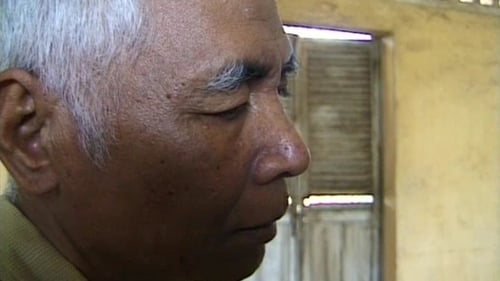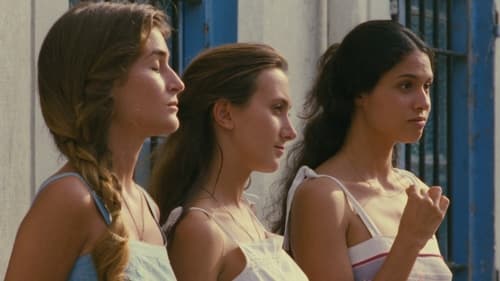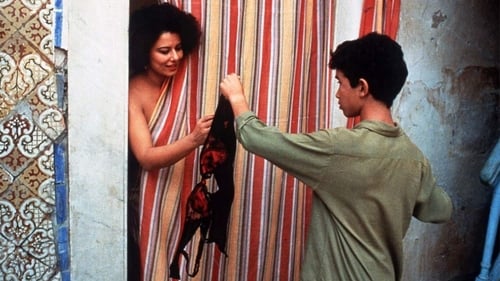
Editor
Durante muchos años el director Rithy Panh ha buscado una fotografía que le faltaba: Una instantánea tomada entre 1975 y 1979 de Khmers Rouges cuando se encontraba en Camboya. Por supuesto, por sí misma una imagen no puede probar el genocidio, pero nos anima a pensar, a meditar, escribe la historia. La buscó en vano en los archivos, en documentos antiguos, en el campo camboyano. Para suplir esta ausencia, ha creado este largometraje que no es una imagen, ni la búsqueda de una imagen única, sino la imagen de una búsqueda: una búsqueda que sólo el cine permite llevar a cabo. El filme se presentó a competición en el Festival de Cannes de 2013 en la sección de "Un certain Regard".

Editor

Editor
Indochina, 1931. En el Golfo del Siam, a orillas del Océano Pacífico, una madre sobrevive como puede con dos hijos, Joseph (20 años) y Suzanne (16 años), a los que quiere ver crecer y cuya partida sabe indefectible. Estafada por la administración colonial, invirtió todos sus ahorros en una tierra habitualmente inundada, por lo tanto incultivable. Luchando contra los burócratas corruptos que la estafaron, y que amenazan actualmente con expulsarla, pone toda su energía en un loco proyecto: construir una barrera contra el mar con la ayuda de los habitantes del pueblo. Arruinada y obsesionada por su objetivo, deja a Joseph y Suzanne una libertad casi total. En ese momento, el Sr. Jo, hijo de un rico hombre de negocios chino se siente atraído por el encanto de Suzanne. La familia intentará sacar partido de esto...

Editor
A blend of fact and fiction, based on the actual lives of the actors, the film depicts a troupe of actors and dancers struggling to practice their art in the burned-out shell of Cambodia's former national theater, the Preah Suramarit National Theater in Phnom Penh.

Editor
Documentary of the S-21 genocide prison in Phnom Penh with interviews of prisoners and guards. On the search for reasons why this could have happened.

Editor
In 1999 a fibre-glas wire was installed from Thailand to Vietnam straight trough Cambodia. Rithy Panh shows us the work done in Cambodia to connect Khmer-society to "modern world". Farmers, soldiers and children work for a living there and unearthen skulls and bones -their remains from PolPot-regime you can see. The fear in their mind is portrayed by Rithy Panh in this documentary. As the other work done by Rithy Panh this deals with his people. I like it very much! The movie was awarded 1999 at "Visions du Réel" in Nyon (Switzerland) and at "Cinéma du Réel" in Paris.

Editor
Set in the newly-pacified Phnom Penh, this film is about the return to civilian life of Cambodian soldiers.

Assistant Editor
1967. En la Goulette, una pequeña ciudad portuaria tunecina, conviven en perfecta armonía distintos grupos étnicos. Yousseí, el musulmán, Jojo, el judío tunecino, y Giuseppe, el siciliano católico, eran tan inseparables como sus tres hijas de 16 años. En una especie de conspiración adolescente, las tres chicas deciden perder su virginidad el 15 de Agosto, el día de la Virgen. Lo malo es que se fijan en chicos de distinta religión, lo que supone violar un tabú. Todo ello ocurre en vísperas de la guerra de los Seis Días, contienda que enfrentará para siempre a judíos y musulmanes.

Editor
Based upon documentation of forced confessions made during the Khmer Rouge era in Cambodia, this film reconstructs the relationship of a young woman, Hout Bophana, and Ly Sitha before they were tortured in executed in 1977.

Editor
Primer largometraje de ficción dirigido por Rithy Panh, el más importante cineasta camboyano, que se centra en las dificultades de una familia cuya vida gira en torno al cultivo del arroz, y que a su vez, sirve como metáfora del sufrimiento y la ausencia de futuro de su propio pueblo durante y tras el genoc

Editor
Retrato de la alegre, sensual y mediterránea sociedad tunecina a través de los ojos adolescentes de Noura, de 12 años. (FILMAFFINITY)

Editor
The story of a Serer village in the groundnut basin of Senegal. Using the words of their ancestors passed on by oral folklore, the villagers trace the history of their village and their difficulties in working their land and living off their produce. Fad'jal is an extraordinary boundary defying film that interweaves ethnographic footage, intimate observation of everyday village life and fictionalised historical scenes. With it, Faye carefully encourages the viewers to reflect both on African history and storytelling, and on the intersection of fiction and documentary.

Assistant Editor
Ngor is a young man living in a Senegalese village who wishes to marry Coumba. Ongoing drought in the village has affected its crop of groundnuts and as a result, Ngor cannot afford the bride price for Coumba. He goes to Senegal's capital city, Dakar, to try to earn more money and is exploited there. He returns to the villagers and shares his experiences of the city with the other men. The story, which shows the daily lives of the villagers, is told in the form of a letter to a friend from a villager, voiced by Faye.











